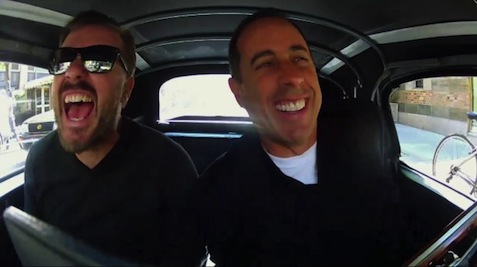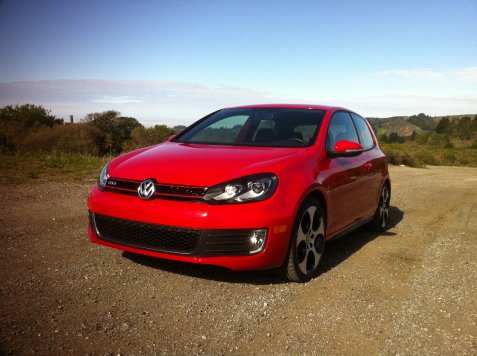Car Review: 2013 Volkswagen Beetle Convertible

Classics will always have a place in our hearts, but to find a place in our driveway, they need to reignite that passion. VW has done exactly that with the venerable 2013 VW Beetle Convertible. Ever since the type 15 Convertible from 1949, the Beetle has been one of the most popular open-top cars built. After driving this fun mobile for a week, we totally get why all ages love this car!
The Beetle Convertible retains the bold, purposeful stance of the Coupe, thanks to wider tracks and a longer wheelbase than the previous New Beetle Convertible. Compared with the 2006 version of the older car, the latest Beetle Convertible is 3.3 inches wider at 71.2 inches, 1.1 inches lower at 58.0 inches tall, and 6.0 inches longer at 168.4 inches overall. There is no doubt that this redesigned Beetle has more of an edge than past models.
A convertible bodyshell is less rigid than a coupe’s because the upper part of the structure is open, so the Beetle Convertible’s body needed reinforcements. This included the use of partial body reinforcements and sheet metal with greater strength such as:
• The A-pillar’s interior bar is 0.5 mm thicker and made from ultra-high-strength hot-formed steel instead of cold-formed metal. There is also a reinforcement in the “bend area”
• The front roof crossmember has an additional central plate
• Additional tubing made of ultra-high-strength (hot formed) steel between the B-pillars as well as a stronger heel plate
• More sheet metal in the lower body side members
• An extra rear panel that integrates the Automatic Rollover Support System is made of high-strength steel
Due to the targeted use of materials and laser welding of selected parts, the body stiffness was increased by 20 percent over that of the New Beetle Convertible; the torsional rigidity is now 17.8 Hz.
Top up, the Beetle Convertible has an even lower roofline than the Coupe’s. The top lies flat when it’s lowered, giving good visibility; the flexible leatherette top boot tidies up the appearance and is also a nice retro touch. Volkswagen decided to stick with a traditional softtop because it allows for a roofline that’s more like the original 1949 type 15s. Also, a softtop takes up less space than a folding hardtop, thus giving more trunk space. The heatable rear window is made of tempered safety glass.
The softtop’s outer shell is made from three layers: an outer one of polyacrylic woven fabric; a middle layer of synthetic rubber; and an inner lining of polyester. Underneath, there’s a three-layer design for the insulation, made from polyester nonwoven fabric, polyethylene terephthalate (PET) insulating fleece, and polyester spunboard. The headliner is made from foam-laminated fabric. The result is a snug top that yields remarkably low levels of wind noise.
The top is powered by two electric motors and latches and unlatches automatically at the touch of a button, which is located on the upper rail of the windshield surround. The top takes just 9.5 seconds to stow and 11.0 seconds to be raised. The difference is in the time it takes to latch the roof’s header to the windshield. The top can be raised and lowered at speeds of up to 31 mph, unusually high for a convertible. Pressing and holding the button opens the top, while pulling and holding closes it. The side windows automatically drop when the top is opened and are raised when it closes. There is an indicator light located in the instrument panel. Trunk space remains the same whether the top is open or closed.
An integrated wind blocking system is available on the Beetle Convertible as a Volkswagen Genuine Accessory. It is housed in the trunk under the convertible top area and can be safely and neatly stowed when folded and not in use. The storage compartment for the wind blocker is designed to allow full use of the trunk area.
Our test model was an eye catcher with a tornado red paint job and black softtop that really popped alongside the 18-inch alloy wheels with all-season tires.
You can follow us on Twitter and Facebook for content updates. Also, sign up for our email list for weekly updates and check us out on Google+ as well.
Posted in: Car Reviews, Cars
Tags: Volkswagen, VW, VW Bug























